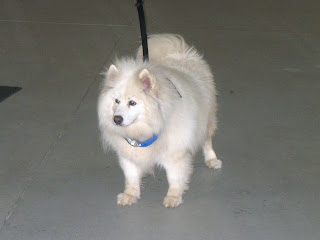 The standard theory for many years is that sometime ten to fourteen years ago (and possibly even much earlier) man domesticated the wolf. For many years it was widely believed that for some reason, humans captured wolf puppies and the domestication process began.
The standard theory for many years is that sometime ten to fourteen years ago (and possibly even much earlier) man domesticated the wolf. For many years it was widely believed that for some reason, humans captured wolf puppies and the domestication process began.However there is a second emerging theory that says the wolf domesticated itself. After training for a number of years, I am beginning to believe that this theory is correct.
In a wolf pack, there are always wolves that would rather scavenge than hunt. Those wolves quickly figured out that there was plenty of left over around a human encampment. Rather than go out and make a kill they started hanging around to gather up our leftovers.
When a wolf, or its descendants the dog, first meet a strange animal they have to figure out if the animal is a predator or prey. If it is a large animal they not only have to decide if it is a predator, but also if it will come after them.
Since the primary way dogs and wolves communicate is by body language the way to deal with this unknown animal is some very distinct body language.
I have a book on body language that I often consult. In the pictures is one of a dog meeting a horse for the first time. The body language is very distinct. Sometimes I show it to people and ask them to say what the first thing that comes into their mind is.
The universal answer “OH isn’t he cute!”
So here is the scenario. Two wolves are outside a cave eating away at what the humans have left behind. Two humans come out. The wolves react and the first human says to the second “OH aren’t they cute!”
Wolf one looks at Wolf two and says “we can con these things out of meals for the next fourteen thousand years."
And so the wolf became domesticated.









